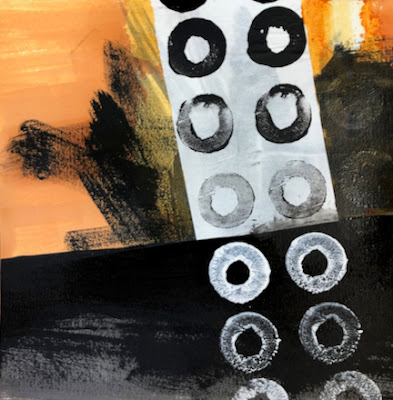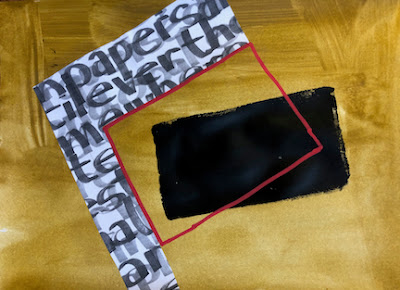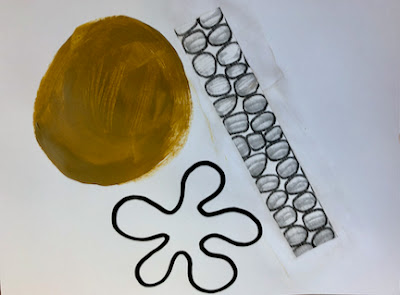Continuing with the downloaded
instruction from
Jane Davies, I embarked on Lesson 4 of Sketchbook Practice.
We began by making large gestural paintings, on cheap 18" x 24" paper, using only black and white materials: paint, ink, crayon, marker, pencil, charcoal, etc. I spattered paint with a toothbrush, improvised paintbrushes from combs and sticks, dripped and drizzled. The idea was to ignore composition. Later, we would be selecting "interesting areas" to cut out and develop.
Somehow, when I am told to do this kind of thing, I begin to work very fast. The result was six large, indistinguishable messes: minestrone soup.
I am so glad that I tossed these six and began again, slowing down and becoming more deliberate, more thoughtful, just as the instructor was in her demo video, creating "areas of interest."
 |
| The 8 successful candidates |
This time, I had no trouble isolating eight mini-compositions to develop further, from four large sheets. One of the key things was to keep distinct areas of dark and light. After gluing them down on larger, better-quality paper, I began to develop each one in turn, extending shapes, adding shape and line. And I have another eight mini's that are also candidates as "starts".
 |
| The 8 runners-up |
Here are some of the results. I don't see any of these as finished pieces, but rather exercises in composition, creating variety and interesting shapes and lines.
To prepare for Lesson 5, we were asked to paint a random shape/line with black paint on small (7" x 7") squares, and then to augment that with a "wash" of black paint. These will be developed later.
The final part of Lesson 4 was to make a rough contour drawing of an object, using a black wash and a big brush. As a second layer, we were to do a quick contour drawing of the same object on top of the wash study, either aligning the two studies or offsetting them.
I was unhappy with my first efforts. There was no energy to them. They were more like drawings that had been filled in with wash, like a child's colouring within the lines.
 |
| Blah |
So I took a looser approach and repeated the exercise, disregarding the matching of the two sketches and going for something of an offset effect.
 |
more lively, more interesting
|
Could still stand to loosen up a bit more. Perhaps a floral arrangement, a more organic subject?
I'm beginning to see how having a regular sketchbook practice would be a good way to generate ideas for further development.



























































